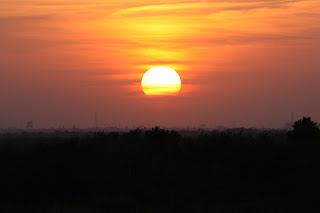We left the RV a little early to see if we could find the Golden Plovers that had been seen at the turf farm in Progresso. We didn’t find any but we did see this Northern Harrier and this immature Red-tailed Hawk. We watched the Red-tailed Hawk chasing jack rabbits. He seemed to be more amusing himself than hunting. He chased a couple of jack rabbits but never did catch one.

Northern Harrier
They like open terrain where there is good ground cover.
They hunt by flying low over fields, scanning the ground.

Immature Red-tailed Hawk
Hunts by flying over fields, watching for prey below. Small prey is carried to a perch while large prey is often partly eaten on the ground.
We drove on to the Valley Nature Center to hear their Saturday morning talk.
Martin Hagne was presenting a program he called Badgering the Valley. It was about 16 species of animals in the Valley that are rarely seen. It included Badgers, Long Tailed Weasel, Pocket Gopher, Beaver, Ring-tailed Cat, Coati, Jagarundi, Hog-nosed Skunk, Rio Grande Lesser Siren, Mexican Burrowing Toad, Texas Blind Snake, etc. It was pretty good and lasted about 1 1/2 hours. After the talk we walked around the Center and found a bunch of Yellow-crowned Night-Herons in the trees. Some were on nests. We got great, up-close looks!

Badgering the Valley by Martin Hagne


Yellow-crowned Night-Heron
Mark was presenting his third in a four part series of nature talks this afternoon at 3:00 so we needed to get back to the RV after lunch. Todays program was entitled Butterflies as Botanists.
We had a large crowd and lots of people mentioned how much they enjoyed the talk.

Next Saturday is the last program and will be about our trip to Ecuador.






































